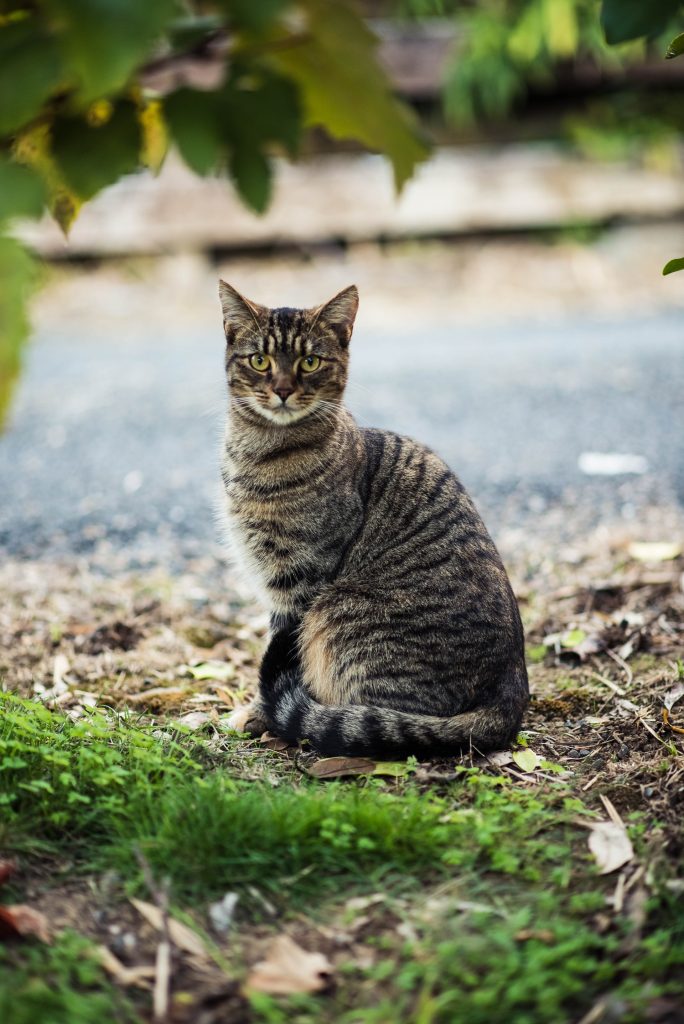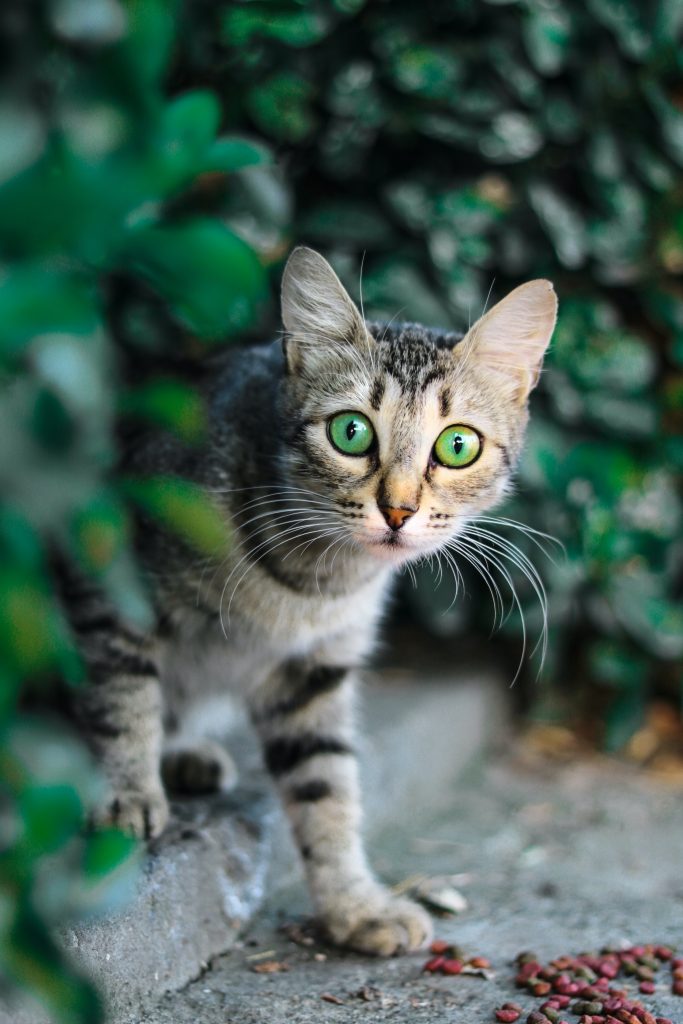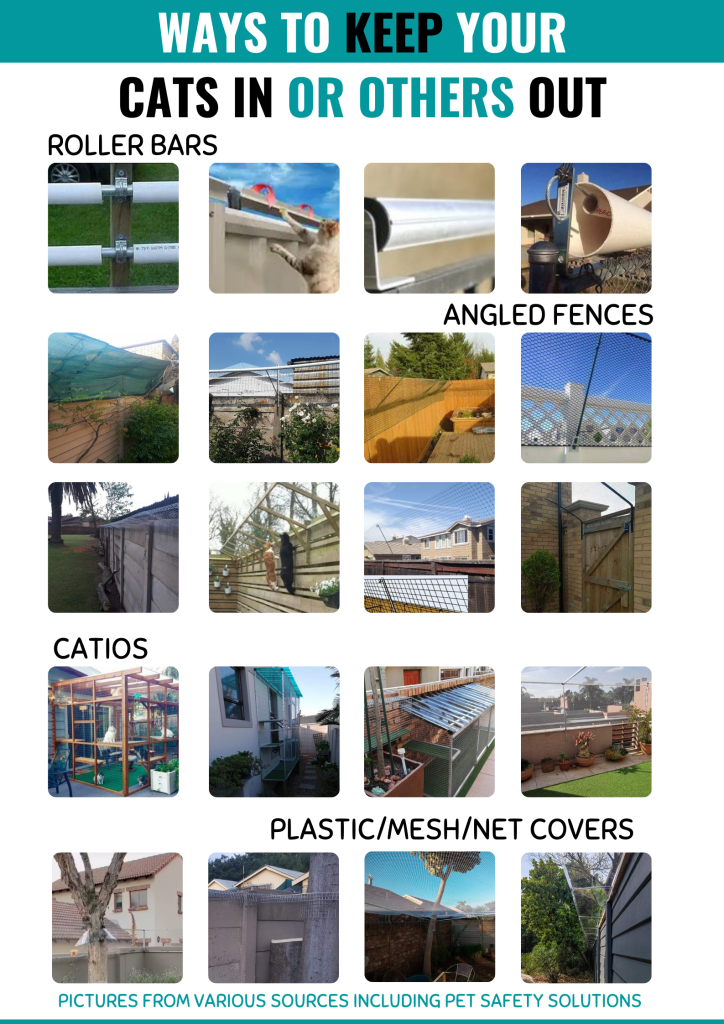
KEEPING YOUR CAT SAFE AND MAINTAINING PEACEFUL RELATIONS WITH YOUR NEIGHBOURS ARE IMPORTANT IN ANY SOCIETY.
While cats bring joy and comfort to our lives, they can sometimes unintentionally venture into behaviours that can be perceived as nuisances by others. From late-night serenades to mischievous garden antics, the challenges can be diverse. However, this bond comes with a responsibility to ensure that our beloved feline friends do not become a source of irritation or disruption to our neighbours.
I recently saw multiple local posts of people complaining about other people’s cats being a nuisance. Cats easily become a nuisance for others as they go into people’s yards or homes. The complaints include that they cause stress for the resident cat and other pets or eat their food, the mating and spraying rituals, pooping in others’ gardens, causing an uproar in the neighbourhood and more.
This article is dedicated to helping cat owners strike a balance between the joy of feline companionship, keeping your cat safe and the need to be considerate neighbours. It is possible to ensure that your cat’s presence is a source of delight for everyone in your community, fostering a harmonious environment where both humans and their furry friends can coexist happily.
Apart from the nuisance, the dangers free roaming poses for your cats are multiple. We live in a cruel, unforgiving and sick world. If you are on social media, follow the news, or just use Google, you should by now have been wholly terrified by the atrocities being committed against animals.

WHY IS IT DANGEROUS FOR YOUR CATS TO ROAM?
Unfortunately, living outdoors comes with a pretty serious set of risks for our small, furry friends. Dangers like, vehicle traffic, predators (both animal and human), attacks by dogs and poisons are all common encounters that cats face outdoors. By keeping your cat safe inside your yard, you extend their life span, save on vet bills, have peace of mind and are not responsible for a neighbourhood nuisance.
The fact is cats are getting lost or stolen or injured or killed and the most common causes of premature death are preventable! They are your responsibility. If you think the streets are not safe for your kids, why would you let your pets roam the streets? Most people will not poison or shoot your kids, but many have no problem doing it to cats or other animals.
When your cat becomes a nuisance to others, it can lead to various issues and potential dangers, both for your cat and your relationships with neighbours. Here are some of the dangers and consequences:
Potential for Harm to Your Cat:
- Cats that roam freely outdoors may encounter dangers like traffic, other animals, and malicious individuals.
- Cats are territorial and they can get into fights with other animals, become injured, and injure other animals.
- Cats face the risk of theft or poisoning whether through intentional or unintentional products.
- Cruel people shoot the cats illegally with pellet guns too. The bullets rarely if ever, kill them immediately or directly, so they are paralyzed when lodged in the spine or they can bleed to death, or die of hunger and dehydration because they can’t move etc.
- Cats get caught in snares set in fields by cattle herders and others to catch animals for food.
- Cats, not just black cats, are being used as offerings in witchcraft. Yes, we have had local cases and witches are living among us.
- Cats can be stolen and used as bait animals in dog fights.
- When cats are frightened or during heavy or cold weather, they sometimes find shelter in car engines and you do not want to hear the horrible stories we can share on this. Cats won’t get trapped in other people’s sheds and garages or car engines or jump into vehicles.
Stress and Anxiety for Other Animals: People who own birds and possible prey for cats have to worry about keeping their animals safe in their own yard because someone wasn’t a responsible owner. Imagine your predator walking around your cage. Our dogs and those in our street go crazy when these cats taunt them and this anxiety created by this issue is not good for the other animals.
Safety Hazards: Cats that wander onto roads can cause traffic accidents and pose a risk to both drivers and themselves. Cats have not attended traffic school and are not familiar with cars as people assume, especially feral cats. You may think that your kitty is street-savvy but be assured they can just as easily be a victim. They can also be distracted, chase something or be chased, and then get hit by a car. There are frequent “hit by a car” situations we see as we drive around. Even if they do survive the Vet bills can be high and the recovery or suffering can be hard and long.
Health Hazards: If your cat is not properly vaccinated, they may pose a health risk to other pets in the neighbourhood. Diseases like feline leukaemia virus (FeLV), feline immunodeficiency virus (FIV) and feline Infectious Peritonitis (FIP) can be transmitted to other cats through fighting, close contact or contact with feces. Parasites, such as worms, fleas, and ticks are another danger outdoor cats are exposed to. They also bring them home and expose your family or other animals to these parasites.
Strained Neighbour Relations: Continuous disturbances caused by your cat, such as incessant meowing, digging in gardens, or pooping in neighbour’s yards, can strain relationships with your neighbours. This can lead to conflicts, disputes, and an overall unpleasant living environment.
Legal Issues: In some areas, local ordinances or bylaws may regulate pet ownership and behaviour. If your cat repeatedly causes disturbances, you could face legal consequences or fines from local authorities. We are pushing for local bylaws too because asking people nicely to keep their animals safe doesn’t work. Cats with destructive behaviour, such as scratching furniture or digging in gardens, can cause damage to neighbours’ property, leading to repair costs and further tension.
Overpopulation Crisis: Unfortunately, many cats who are allowed to roam are not sterilized. Cats can have 3 litters of 4-6 kittens a year from as young as 4 months. You do the maths. Unsterilised and roaming cats add to the massive overpopulation crisis we face. You will either end up with kittens or cause others to have kittens because your cat was not sterilized.
To prevent these dangers, it’s essential to take responsible measures as a cat owner, such as keeping your cat indoors, supervising outdoor activities, addressing behavioural issues, and maintaining open communication with your neighbours. This way, you can ensure both your cat’s safety and positive relations with those around you.

STRATEGIES TO PREVENT YOUR CAT FROM BECOMING A NUISANCE
Now that we have looked at the “why”, let us look at the “how” when we will explore some practical ideas to cat-proof your property, and keep your cat safe.
Indoor Living: Consider keeping your cat indoors. Indoor cats are less likely to roam, get into altercations with other animals, or disturb neighbours. If you’re concerned about their mental and physical stimulation, provide plenty of toys, scratching posts, and interactive play.
Supervised Outdoor Time: If you’d like your cat to enjoy the outdoors, create a secure outdoor enclosure or use a leash and harness for supervised outdoor excursions. This allows them to experience the outdoors safely without bothering neighbours or endangering wildlife. Invest in a good quality cat harness and acclimatise your cat to the harness from a young age. With patience and persistence, older cats will also get used to it.
Litter Box Maintenance: Ensure your cat’s litter box is kept clean and odour-free. Regularly scoop and clean the box to prevent unpleasant odours from drifting into neighbouring areas.
Proper Identification: Make sure your cat wears a collar with an ID tag containing your contact information. Consider microchipping your cat as an extra layer of identification and make sure your microchip is registered, with the right contact details, on multiple platforms. Non-breakaway collars cause cats to get stuck in dangerous situations, so please choose breakaway collars with tags.
Avoiding Nocturnal Disruptions: Cats are crepuscular and are most active at dusk and dawn anyway. Most cats will adapt to living indoors. If your cat has difficulty adjusting, start by gradually increasing the time they spend indoors. Start with a part of the evening, gradually increasing the time. To prevent late-night meowing or roaming, engage your cat in interactive play sessions during the day to tire them out before bedtime and make sure they are inside by nightfall.
Neutering/Spaying: Ensure your cat is neutered or spayed. This can reduce territorial and mating-related behaviours that might lead to conflicts with other animals and nuisance behaviours. You female that is not spayed will attract males of owners who do not keep their cats safe either. Males will travel kilometers after females in heat.
Communicate with Neighbours: Maintain open communication with your neighbours. Let them know that you’re aware of your cat’s actions and that you’re taking steps to address any concerns they may have.
Provide Distractions: Offer your cat engaging activities, such as puzzle feeders, treat-dispensing toys, and window perches, to keep them occupied and reduce boredom-related behaviours. Read more on enrichment for your cat here. Using catnip is another option.
Training and Socialization: Early socialization and basic training can help your cat become more well-behaved and responsive to commands, reducing potential nuisances.
Seek Professional Help: If your cat’s behaviour continues to be a nuisance despite your efforts, consult with a veterinarian or animal behaviourist for personalized guidance and solutions.
Fencing and Barriers: If your cat tends to wander, consider installing cat-proof fencing or barriers in your yard to keep them contained. Building an enclosure or securing your garden will protect your cat from the many dangers associated with roaming. Let’s elaborate on this……

HOW TO PREVENT YOUR CAT FROM LEAVING THE YARD.
FENCE YOUR YARD
Yes, it can be done. I have found some very practical ideas on Google and Pet Safety Solutions, to demonstrate this point. Even if you start with just a portion of your yard cordoned off, for the cats, it will be better than letting them roam freely. Ideas range from:
- High walls (above 6ft), with pet-safe electric fencing on top. If needed, raise your fence.
- Attach rotating pipes, gutter pipes, or spinning paddles to existing walls.
- Angled fencing on top of an existing wall, is just as effective and can also be done by yourself.
- Trees can be trimmed regularly and wrapped with plastic or PVC “dividers” so that they cannot be climbed and still allow cats access to the outside.
BUILD A CATIO
A catio can be made of metal, wood, or any other durable material. Just make sure the materials used are non-toxic and free from sharp edges. It can be attached to your house, with access through a window or cat flap, or a separate enclosure on the property. A Catio can be a simple window box, a large enclosure, with, or without grass, or a small box with grass. Wheatgrass purchased in the veggie department of your local supermarket, makes a safe alternative to grass, for cats to nibble on. You can put cat furniture, litterboxes and other items in the catio, to keep it interesting for your cat.
OTHER METHODS
Together with fences, you can plant certain species of plants that cats dislike, however, you need to make sure it is not poisonous to them. Some cats seem to dislike the smell of rue, lavender, pennyroyal, coleus Canina and lemon thyme. Cats also seem to not like (safer options) strong citrus scents, cinnamon, and fresh, unbrewed coffee grounds and some sources suggest human hair smell as well. This might not apply to all cats.
If you really cannot apply any of the above, try creating a routine for your cat. For example, a lick of wet food in the morning to make sure they check in and again in the evening. Once they are in for the evening, close them in until the morning. Yes, you can do it and your cat will not be harmed.
Less cats are microchipped and people take much longer before they start searching for their missing cat. Most people assume the roaming cat lives nearby and then these cats are not reported. Read more on finding a missing cat.
Also, read why “free to good home” ads of animals are dangerous.
In conclusion, responsible cat ownership entails much more than simply providing food, water, and shelter. It involves a commitment to ensuring the safety and well-being of your feline friend and being considerate of your neighbours and the environment.
ALWAYS REMEMBER THAT AN ANIMAL WHO APPEARS TO BE A NUISANCE……SOMEWHERE HAS A HUMAN WHO FAILED THEM. BLAME THE HUMAN, NOT THE ANIMAL.
The same way you keep your cats in, you can keep other cats out if you don’t want them in your yard. Please report cruelty to cats which includes any poisoning or shootings. For assistance with cat-proofing your yard, you can contact Pet Safety Solutions. We have not worked with them directly and it is not a paid endorsement, but frequently see their posts and creative ideas.
By now you will realise the point is that cats do not need to roam outdoors to be happy. Provide for their basic needs at home, and they can live longer and healthier lives when safely confined to your yard or home. You do not need to spend lots of money to keep your cat safe, but can you put a price on safety anyway?
Next week we will look why you should not support the circus!
WHEN YOU KNOW BETTER, DO BETTER!